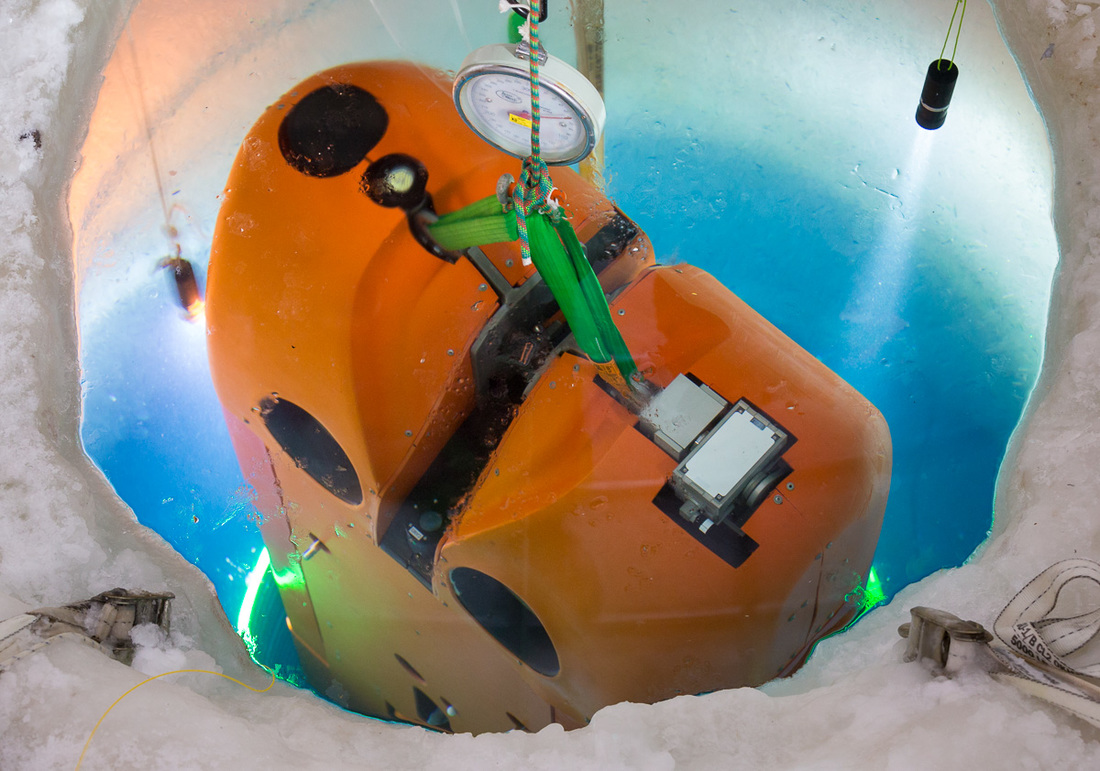ARTEMIS in the Water

ARTEMIS sits fully submerged in the drill hole. The culvert liner glows in the dive lights used to check the vehicle orientation and mechanical clearance. (photo: Peter Kimball)
Yesterday (Monday), we submerged ARTEMIS in the Ross Sea for the first time. This is a huge milestone for us, but also one that we hope will feel insignificant soon as we progress to more ambitious operations.
The day started with priming of the pumped water instruments and sampling lines. These need to be filled with seawater (and emptied of air) before ARTEMIS can go in the water for buoyancy adjustment. The science team used a Niskin Bottle sampler to bring up seawater from beneath the culvert for this purpose. Meanwhile, the software and mechanical teams prepared the vehicle for submersion.
The actual dunking process was slow as we were very careful about mechanical interference between the robot and the culvert. We were able to fully submerge ARTEMIS and record its weight in water using a calibrated dial spring scale from Crary lab supply. This was the first step in the critical process of ballasting ARTEMIS to sit at near neutral buoyancy in the water of the Ross Sea.
From McMurdo and from our field site, the sun crosses over Mt. Discovery (or behind just two weeks ago!) at about midnight. The weather was a little nasty yesterday, but easing as we finally left the field site a little after 11 pm. The low sun and easing weather provided an epic view to the South as we headed home for the night.

Nighttime sun glints off of continental ice beyond Mt. Discovery. (photo: Peter Kimball)
Reporting by Peter Kimball